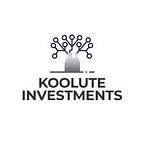In the wake of the recent African Climate Summit in Nairobi, let’s explore how Africa is poised to take the lead in sustainable design practices
“Quality, sustainable housing is an important way of ensuring vulnerable populations are more resilient to the effects of the climate crisis” Particularly the frequency of natural disasters has tripled in the past 30 years, with Sub-Saharan Africa home to nearly three-quarters — 393 million — of the global number of children living in countries affected by emergencies.
“Africa has 39% of the world’s renewable energy potential, more than any other continent.”
The continent’s rich natural resources and rapid urban growth offer immense potential for the green building industry. African architectural innovation is marked by a deep connection to the environment, highlighting sustainability, creative material utilization, seamless integration of technology, and the harmonious fusion of form and function.
The Benefits of Sustainable Affordable Housing
Addressing Africa’s Affordable Housing Crisis: Africa faces a severe housing crisis, with the African Development Bank estimating a yearly need for 3.3 million affordable housing units to accommodate population growth. Unfortunately, this demand is largely unmet, leaving over 60% of urban residents in informal settlements without basic services. Sustainable affordable housing offers a comprehensive solution, enhancing living conditions, reducing energy costs, and curbing carbon emissions while fostering economic growth and improving access to essential services.
Globally, buildings account for up to 40% of total energy consumption and 20 percent of greenhouse gas emissions, with residential buildings in many African cities emerging as the second-largest energy consumers after transport
It’s crucial to note that the steel and cement industries are responsible for 38% of emissions in Africa. Additionally, there is a heavy reliance on imported materials and a growing dependence on fossil-fuel-based electricity for production, reaching as high as 86% in some regions.
Many African nations have committed to global efforts to reduce greenhouse gas emissions by including buildings in their Nationally Determined Contributions (NDCs), with 38 out of 54 countries having submitted updated NDCs. However, Sub-Saharan Africa faces a shortage of mandatory codes, recognized as essential tools for emissions reduction in the sector.
Africa proudly boasts some outstanding sustainable construction projects that have garnered well-deserved recognition:
· Universidade Agostinho Neto, an epitome of sustainable design / university campus in Luanda, Angola
· Gando Primary School in Burkina Faso, a shining example of eco-friendly education.
· Eastgate Centre in Harare, Zimbabwe, a pioneer in sustainable office spaces.
· The ‘Inno-native’ Home in Accra, Ghana, blending innovation with environmental consciousness.
· El Mandara Eco-Resort in Fayoum, Egypt, a serene oasis of sustainability.
Need for Green Building Guidelines
Case in point, green building guidelines have the potential to substantially reduce energy demand in rapidly growing African cities. The task at hand is to institutionalize and mandate these guidelines for all new constructions and major retrofits, exemplified by initiatives like KwaDukuza Municipality’s focus on cost-effective passive solar design, shading devices for windows, optimal building orientation, LED lighting mandates, comprehensive insulation, and the adoption of renewable energy sources for hot water.
Need for Green funding
“Africa attracted only 2% of global spending on renewables over the last decade, according to the leaders’ statement. But it said the continent would need a “tenfold increase in the finance capital flowing” into renewables in the next seven years, some $600 billion, to achieve the aim of boosting renewables from 56 gigawatts (GW) in 2022 to at least 300 GW by 2030.
The Africa climate Summit adopted the Nairobi Declaration — Calling for “concrete action” on reforms that lead to “a new financing architecture that is responsive to Africa’s needs”, including debt restructuring and relief.
Surprisingly, a substantial USD 90 billion is already invested in Africa’s energy sector at present. This significant investment is crucial when considering the dire energy situation on the continent. Approximately 600 million Africans, constituting 40% of the population, lack access to electricity, while nearly 1 billion Africans, roughly 70%, do not have access to clean cooking fuels. To address these pressing issues, the Sustainable Africa Scenario (SAS), as detailed by the IEA and Africa Energy Outlook 2022, requires an ambitious mobilization of USD 200 billion annually by 2030.
Grid investments are anticipated to rise significantly, increasing from around USD 10 billion per year today to nearly USD 50 billion by 2030. Despite these promising developments, Africa still grapples with energy poverty, contributing only 6% to global energy consumption and meeting just 3% of global electricity demand.
Ultimately, the key to success lies in building resilient, healthy, and equitable communities through the integration of sustainable design, materials, and infrastructure, with crucial collaboration between governments and the private sector.
